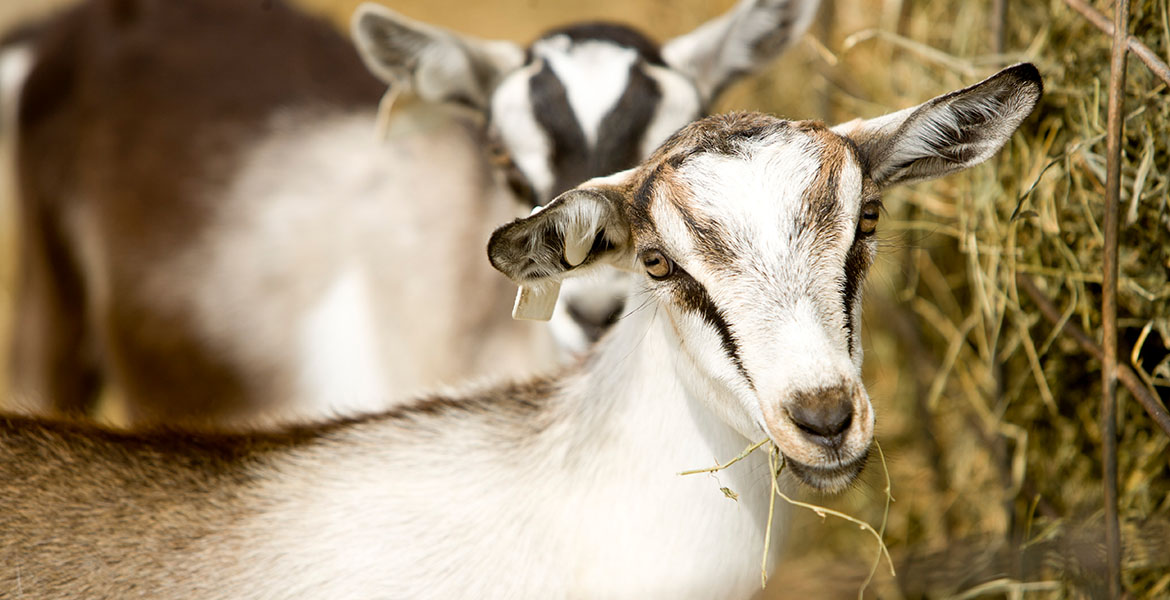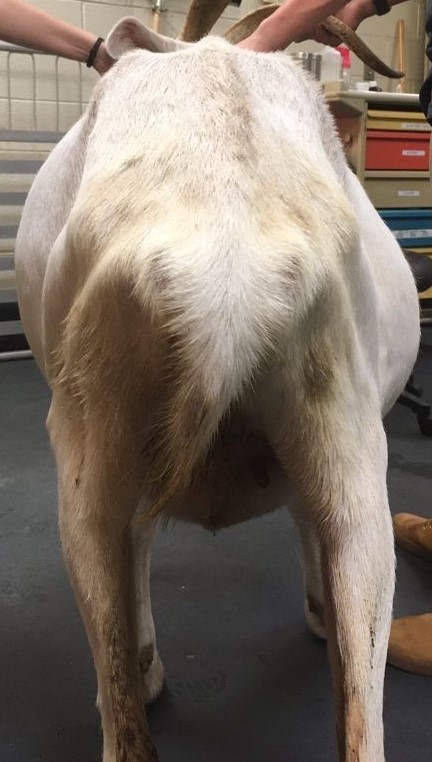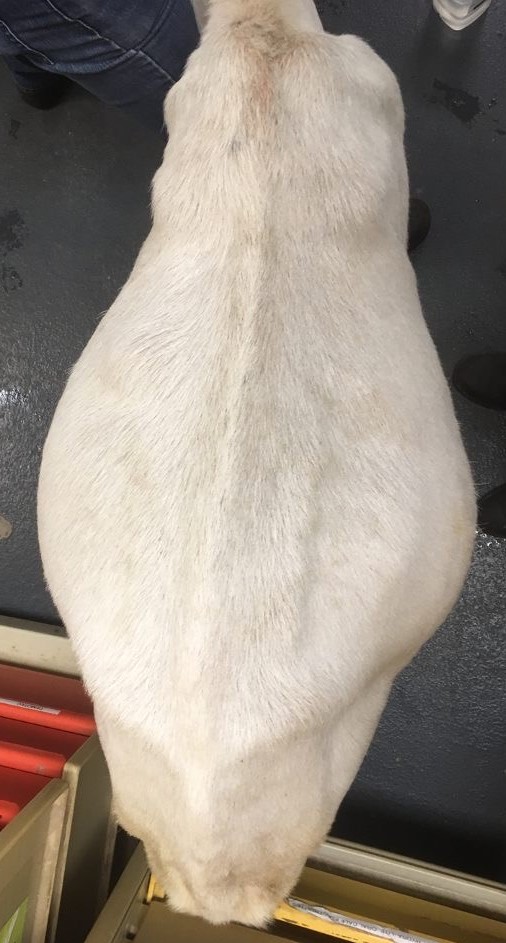
Grain Overload in Goats
Monday, October 5, 2020

It turns out that a really high-carb diet might be especially bad for your goats.
Rumen acidosis, or an abnormal acidic environment within the first stomach of ruminants, develops with the rapid fermentation of highly digestible carbohydrates that are ingested in excessive amounts. Although corn is commonly implicated, other cereal grains (oats, wheat and barley) may be the offending feedstuffs, particularly if they are finely ground. Although the more common name for the condition is “grain overload,” breads, rice, apples, grapes, sugar beets and potatoes have also been implicated as sources of excess carbohydrates.
Rumen acidosis usually occurs in goats that have been fed predominantly forage-based rations and suddenly gain access to a large amount of highly fermentable concentrates. It can also occur if the amount of concentrates is suddenly and drastically increased or if access is denied for a time, then suddenly returned. Other causes include ration mixing errors or accidental access to open bags of grain.
Clinical signs may include lack of appetite, bloat (Fig. 1a and 1b), lack of rumination (chewing cud), dehydration, diarrhea, depressed mentation, incoordination, collapse and in severe cases, death.
The diagnosis is usually obvious based on history and the involvement of multiple animals. Diagnosis is confirmed by clinical findings, a low rumen fluid pH (less than 5.5), and the absence of live protozoa when rumen fluid is examined under the microscope.
Treatment includes emptying the offending content from the rumen as much as possible and replacing it with rumen fluid collected from a healthy donor. Buffers such as magnesium hydroxide are often needed to increase overall rumen pH and provide a suitable environment for the survival of normal rumen microflora. Antibiotics, such as penicillin and thiamine (vitamin B1), are also an important component of treatment. Severely affected animals will require intravenous fluid therapy.

Since rumen acidosis can be fatal and is associated with other common diseases including thiamine deficiency (polio), enterotoxemia (overeating disease), urinary calculi, laminitis (founder) and liver abscesses, preventing this condition is key to reduce losses.
Prevention involves slowly introducing concentrate feeds to allow the adaptation of rumen microflora. Dietary changes from to a higher fermentable energy concentration should occur slowly, preferably over a two- to three-week period. Growing doelings and bucklings can be supplemented with whole shelled corn or sweet feed labeled for goats at 0.5 percent to 1 percent of body weight per day (¼ to ½ pound of corn per head per day for a 50-pound animal). Mature bucks and does can be supplemented with whole shelled corn or sweet feed at 0.25 percent to 0.5 percent of body weight (1/2 to 1 pound of grain for a 200-pound buck). If goats are being fed a high-concentrate diet, it is recommended to divide the grain feedings over three or more meals per day.
If you have questions about grain overload, consult your veterinarian.
AUTHORS: Melanie Boileau, DVM, MS, Dipl. ACVIM, McCasland Clinical Professorship, an associate professor of food animal medicine and surgery at the Oklahoma State University College of Veterinary Medicine.
Natasha Williams, DVM, a food animal medicine and surgery resident in the Department of Veterinary Clinical Sciences at the Oklahoma State University College of Veterinary Medicine.
